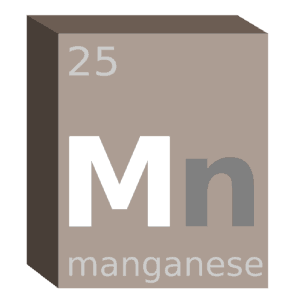Manganese: Steel, Billionaires, and Government Cover-ups
Manganese is a key component of modern steel. It is an essential nutrient and a neurotoxin. And it was a cover-up for one of the most secretive and expensive CIA plots of the Cold War.
Almost all steel currently in use relies on manganese for some of its most important properties. Adding manganese to iron ore removes oxygen and sulfur. Using it as an alloy to makes steel stronger, more durable, and less likely to break. Safes, gun barrels, and military helmets use steels with very high levels of manganese (up to 15%).
Manganese is an important component of steel and is also used in some welding. So, it is often a component of welding fumes. In this situation, it is very dangerous. That’s because inhaled manganese causes a form of brain damage that can mimic Parkinson’s disease. Symptoms include tremors and difficulty walking. Cutting a material containing manganese with a laser or plasma cutter presents a risk of inhaling manganese fumes. It’s one of the reasons a good dust and fume collection system such as our CMAXX™ is important in these applications.

Here’s an Interesting Story
Okay, so… where do the billionaire and the covert CIA operations come in?
In 1968, a Soviet submarine with nuclear missiles sank in the Pacific Ocean in international waters. The Soviet search vessels were unable to locate the wreck. The CIA very much wanted access to what might be a treasure trove of Soviet nuclear secrets and codes. However, hanging around in the vicinity of a missing Soviet nuclear submarine would be difficult to explain. A cover story was needed, and that cover story was manganese.
The Manganese Deception
With the help of billionaire Howard Hughes, the CIA hid their operation, called “Project Azorian.” They claimed that their deep sea exploration ship was to go prospecting. They would search for a huge amount of manganese found on the ocean floor. It would be in the form of manganese nodules, lumps of manganese, and iron. In theory, Howard Hughes’ company would profitably harvest these nodules with a ship equipped for exploring and collecting things from the bottom of the ocean. Since manganese is important for steel manufacturing (and therefore important to the military), they mine almost all of it outside the United States.
In reality, this was never a reasonable way to get access to a metal that they could easily mine in many parts of the world. However, it was an excuse to send a ship equipped with everything needed for the project to wander around the Pacific. On paper, Hughes was the owner of the ship, so it wouldn’t attract as much attention as a military vessel while probing around in international waters.
The project was able to recover parts of the sub, possibly including two missiles and other classified information. But it could not recover most of the submarine. After Project Azorian ended, prospecting for manganese on the ocean floor was abandoned in favor of the less ridiculous solution of digging it out of the ground.
There are also people who think the cover-up was a cover-up, pretending to have an interest in the lost submarine when in reality they were trying to access deep-sea communication cables or build underwater nuclear weapon launchers. This story seems approximately as logical as deep ocean rock collecting, although if surface reserves of manganese ever run out, the nodules scattered across the ocean floor might be a target of interest again.


